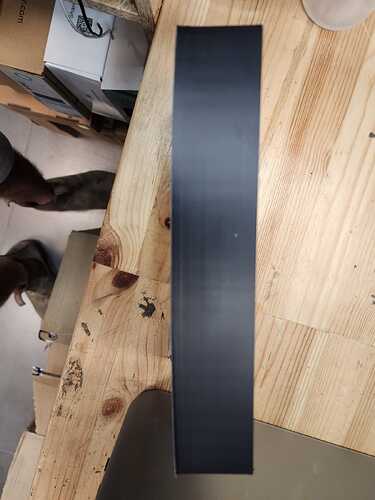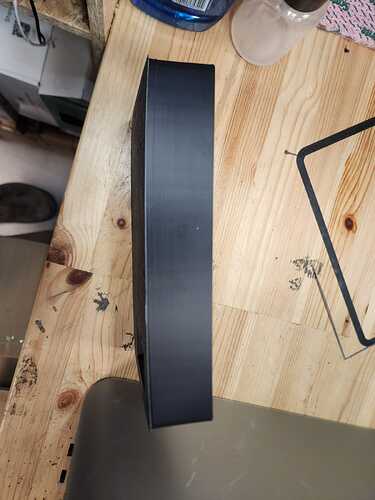hi everyone im trying to print polymaker asa on my x1-carbon with the double sided textured pei and a 0.6 nozzle also a glue and still get wraping what can be the couse?
ASA warps, just not quite as badly as ABS. You can try and fix this by increasing print bed temp and making sure no fans run during the print. Also will help if you turn on the bed heater and wait about 30-45 minutes for the chamber to warm up and stabilize before you start your print.
Are you referring to just the aux fan or also the part cooling fan?
All fans.
These plastics shrink quite a bit as they cool off. So you want to minimize how much the plastic can cool off before the print is completed.
Reducing build plate temp and extrusion temp can also help, since it’s really the delta in temperature from hot to cold that determines how much “creep” there’ll be. But reducing these temps can cause problem with build plate adhesion and inter-layer bond strength.
When I print ASA or ABS, I get (and keep) things as hot as I can during the print. At the end of the print, I remove the build plate and let it cool on a baking cooling sheet thing I stole from my wife. So that the bottom of the print isn’t getting residual heat from the build plate heater, it gets to cool off at something approximating the rate of the top of the print.
Other tricks include designing “stress relief” in to the model to make it less prone to warping (this can be hard to do, and even harder to explain, and it highly dependent on the specifics of the model being printed), or printing the model at a different angle that minimizes the amount of horizontal surface area (since it’s also the size of the “horizontal cross section” of the print that contributes to the forces that cause warping). For example, if you stood your model on its narrow end for printing, it’d be much taller than it was wide, and that’ll make it less prone to warp.
Warping is caused by the filament cooling at different rates. So as the print grows, the lower layers will stay consistent at bed temp, but the middle layers will start to cool faster. The different speed of cooling causes different rates of contraction, with the middle pulling up on the bottom. The goal is to have the whole print cool at the same time, but this isn’t possible. The next best thing is to keep the chamber at the Tg (Glass transition temp, the temp where the plastics changes at a polymer level), again not really doable without a chamber heater. But also, this is a weird temp for ASA and ABS, largely because of their make up. But think of 100C as that number. Unfortunately the X1C can’t make that chamber temp.
So the goal, considering the machine’s limits, is to finds ways to stay as close to that 100C as possible and mitigate other factors.
- Turning off as much cooling as you can, overhang/bridging cooling is needed but that’s it.
- Preheating the bed (actually chamber) as mentioned above will help with the goal of staying as close to the Tg as you can.
- Another trick is, high infill warps more. So thin out the infill in the areas that warp to mitigate it. This is possible with the slicer’s modifier shapes. They allow you to target areas for low and high infill.
- Increase brim width
There are more tips and tricks like targeted area infill types, but I don’t want to overwhelm you (any more) with more info than may be needed. I fully believe you can find a setup that gets you sorted out with just those items above (plus the great tips others have, and will give).
thank you very much for the help ![]()
thank you very much ![]()

